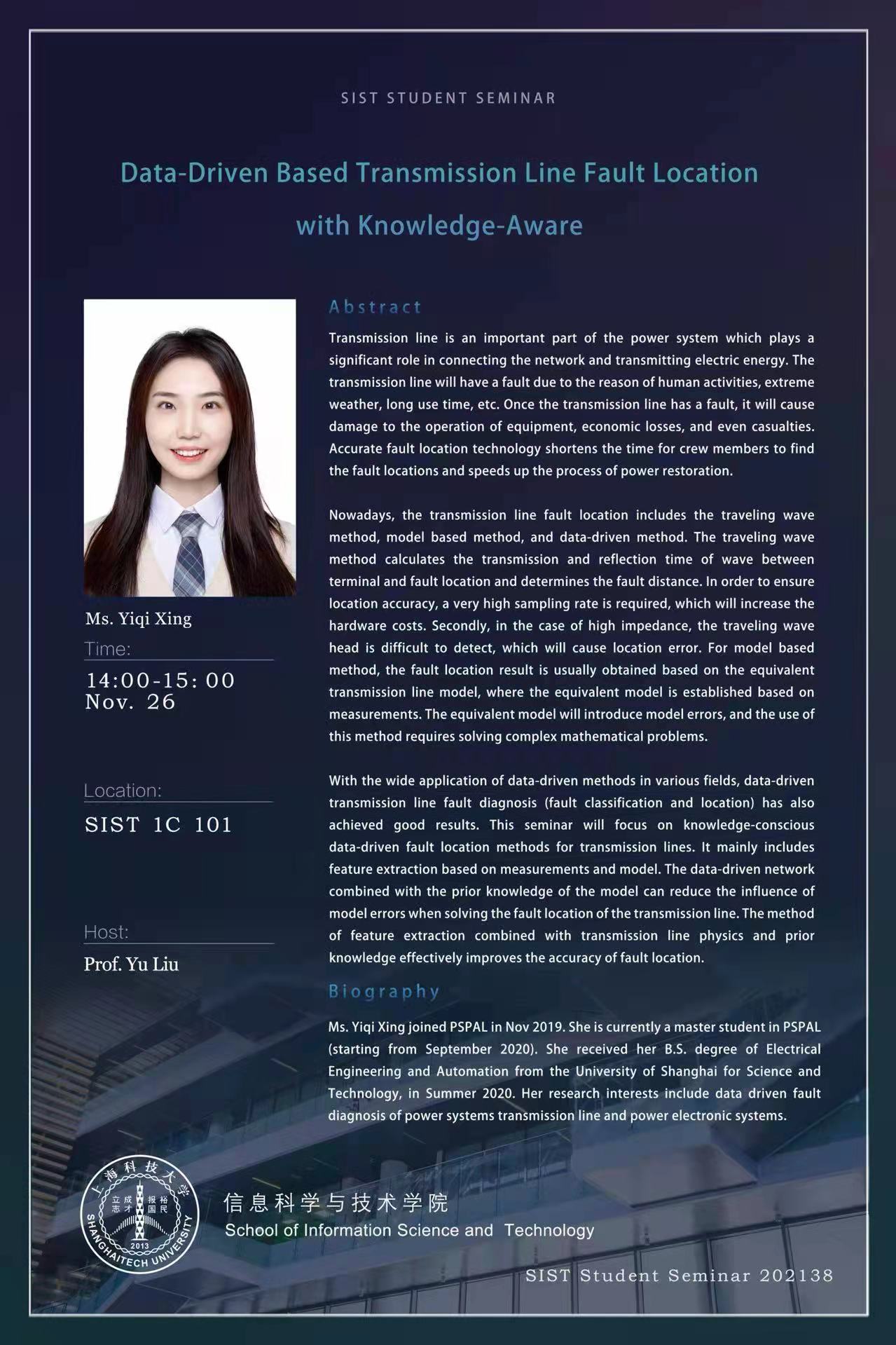The colloquium of the Center for Intelligent Power and Energy Systems (CiPES) was held on Nov 26, 2021. This is a monthly event where we invite students and experts in the area of power and energy to give presentations about their research.
Today the presenter is Ms.Yiqi Xing from PSPAL. She gave a talk on her research: "Data-driven based transmission line fault location with physics-informed". After the presentation, the audience discussed with the presenter about the details of her research.
Ms. Yiqi Xing joined PSPAL in Nov 2019. She is currently a master student in PSPAL (starting from September 2020). She received her B.S. degree of Electrical Engineering and Automation from the University of Shanghai for Science and Technology, in Summer 2020. Her research interests include data driven fault diagnosis of power systems transmission line and power electronic systems.
The abstract of this talk is as follows:
Transmission line is an important part of the power system which plays a significant role in connecting the network and transmitting electric energy. The transmission line will have a fault due to the reason of human activities, extreme weather, long use time, etc. Once the transmission line has a fault, it will cause damage to the operation of equipment, economic losses, and even casualties. Accurate fault location technology shortens the time for crew members to find the fault locations and speeds up the process of power restoration.
Nowadays, the transmission line fault location includes the traveling wave method, model based method, and data-driven method. The traveling wave method calculates the transmission and reflection time of wave between terminal and fault location and determines the fault distance. In order to ensure location accuracy, a very high sampling rate is required, which will increase the hardware costs. Secondly, in the case of high impedance, the traveling wave head is difficult to detect, which will cause location error. For model based method, the fault location result is usually obtained based on the equivalent transmission line model, where the equivalent model is established based on measurements. The equivalent model will introduce model errors, and the use of this method requires solving complex mathematical problems.
With the wide application of data-driven methods in various fields, data-driven transmission line fault diagnosis (fault classification and location) has also achieved good results. This seminar will focus on knowledge-conscious data-driven fault location methods for transmission lines. It mainly includes feature extraction based on measurements and model. The data-driven network combined with the prior knowledge of the model can reduce the influence of model errors when solving the fault location of the transmission line. The method of feature extraction combined with transmission line physics and prior knowledge effectively improves the accuracy of fault location.
